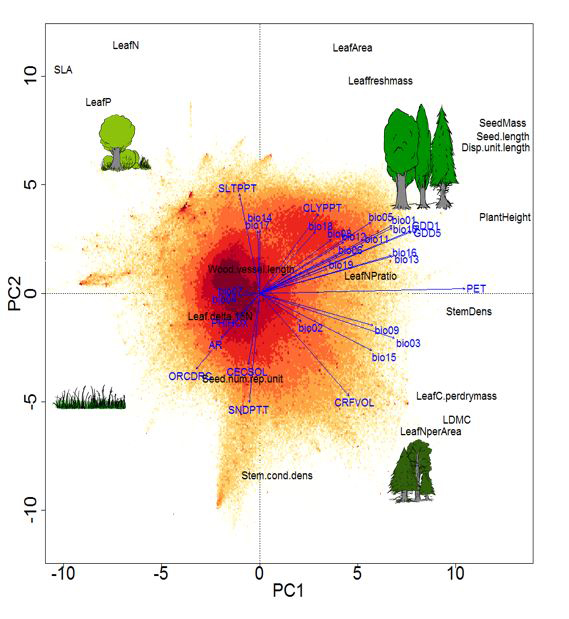Terrestrial ecosystems (e.g., grasslands, forests) provide a variety of services to human societies, for example climate regulation, provision of water, energy and materials such as timber or animal fodder. These ecosystem ‘functions’ depend on the species (grasses, shrubs, trees) that make up these ecosystems. It is now known that it is not so much the taxonomy of the species that matter, but rather how their leaves, stems and roots are made, i.e., their ‘functional’ attributes, or traits. When a grassland or a forest community is composed of many species, it is the community-level average of the traits of all the component species that defines the level of the observed ecosystem function. Key questions are a) to what extent these community-level trait compositions differ globally, and b) whether environmental drivers at local and/or global scale affect community-level trait values. Here, we perform a global, plot-level analysis of trait–environment relationships, using a database with more than 1.1 million vegetation plots and 26,632 plant species with trait information. We find two main community-level trait axes that capture half of the global trait variation across these 1.1 million vegetation plots. These two axes represent plant stature and leaf traits controlling resource acquisitiveness (light, nutrients, etc), similar to prior results at the scale of individual species. We found that climate and soil conditions at the global scale exert only a weak control on community-level trait averages. Our results indicate that, at a fine spatial grain, macro-environmental drivers are much less important for functional trait composition than has been previously assumed. Instead, trait combinations seem to be predominantly filtered by local-scale factors such as disturbance, fine-scale soil conditions, niche partitioning and biotic interactions.
References
